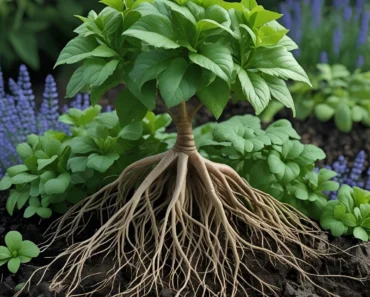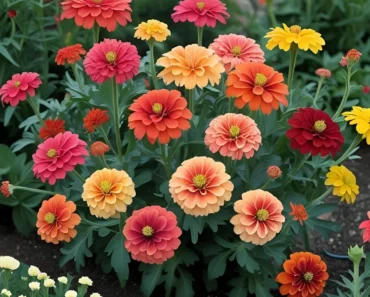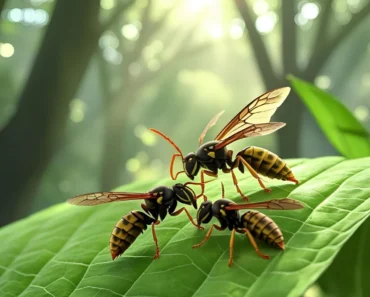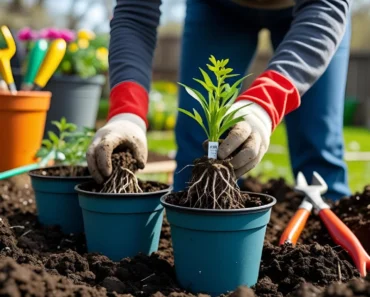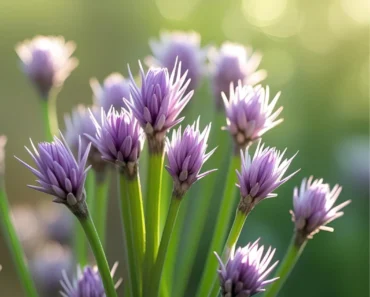Removing wasps safely without getting stung is a common concern for homeowners, gardeners, and outdoor enthusiasts. Wasps can become aggressive when threatened, making DIY removal potentially dangerous, especially for those allergic to stings. Fortunately, there are several effective and safe ways to handle wasps, whether it’s a single intruder or a full nest. This comprehensive guide explains proven strategies to manage wasps with minimal risk, practical tips, natural deterrents, and when professional help is the best option.
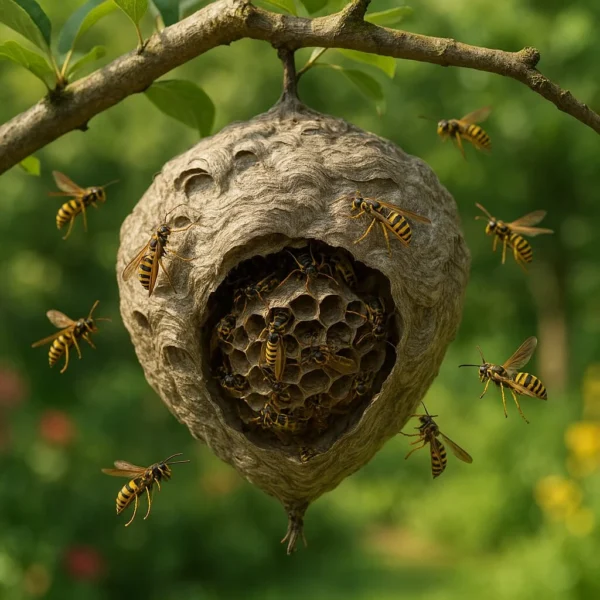
Understanding Wasps and Risks
Wasps are territorial and defensive. They usually sting only when provoked, but accidental swatting, loud noises, or sudden movements can trigger attacks. Some wasps also release pheromones upon stinging that rally others to defend the nest aggressively.
Safety should always be paramount when dealing with wasps. Protective clothing, calm behavior, and keeping your distance are essential precautions. If you or a family member has severe allergy, professional insect removal is strongly recommended.flick+1
1. Stay Calm and Do Not Swat
Though instinctive, swatting or rapid movements encourage wasps to sting. Instead:
-
Remain still or move slowly to avoid disturbing the insect.
-
If indoors, avoid sudden motions that alarm the wasp.
-
Wait for the wasp to settle before attempting removal.goodhousekeeping+1
2. Create an Exit Path
One of the safest ways to remove a lone wasp indoors is to entice it outside.
-
Open windows and doors nearest the wasp to provide an escape route.
-
Turn off indoor lights and draw curtains; keep outside area bright since wasps are drawn to light.
-
Use a broom or gentle air current (like a fan) to guide the wasp toward exits without touching it.flick
3. Trap and Release
For wasps unwilling to leave and posing a threat, humane trapping is effective.
-
Wait for the wasp to rest on a surface.
-
Cover it with a glass or jar.
-
Slide stiff paper under the opening to trap the wasp.
-
Carefully carry outdoors and release far from people.
This approach avoids chemicals and stings.flick
4. Use Soap and Water Spray
Mild soap solutions can incapacitate wasps safely indoors or outdoors.
-
Mix dish soap into water (a few drops per cup).
-
Spray lightly onto wasps to clog breathing pores.
-
Use caution: spraying requires close proximity and may provoke aggressive behavior.flick
Avoid toxic sprays indoors or near pets.
5. Natural Deterrent Sprays
Certain essential oils naturally repel wasps:
-
Peppermint, lemongrass, citronella, and clove oils mixed with water and a small amount of soap make effective sprays.
-
Apply to outdoor nesting areas, entrances, garden foliage, eaves, and door frames.
-
Reapply after rain or watering.
-
These sprays discourage nesting and foraging without harming beneficial insects.waspnestremoval+1
6. Avoid DIY Wasp Nest Removal if Possible
Removing an active wasp nest is inherently risky due to aggressive swarming.
-
Don’t attempt during day when wasps are active.
-
Night removals are safer but require protective gear (bee suit) and professional experience.
-
Most nests should be handled by pest control professionals to prevent stings, incomplete removal, or re-infestation.peststopboys+1
7. Identify Nest Location and Wasps
-
Observe wasp flight and activity times – mornings and evenings are less active.
-
Wasps nest in eaves, wall cavities, trees, sheds, or underground.
-
Different species require different control approaches; paper wasps are less aggressive than yellowjackets or hornets.
-
Early detection and preventive sealing of entry points help reduce recurrence.goodhousekeeping+1
8. Set Wasp Traps Away from Human Activity
Commercial or homemade traps using sugar water or protein attractants catch foraging wasps.
-
Place traps 10-20 feet from doors and play areas.
-
Check traps regularly and clean.
-
Traps can reduce wasp populations locally but won’t eliminate nests.getmypests
9. Call Professionals When Necessary
Professional pest control offers:
-
Safe, effective nest location and removal
-
Use of industrial-grade insecticides or treatments
-
Advice on exclusion and prevention
-
Peace of mind, especially for allergy sufferers.orkin+1
Long-term Prevention Tips
-
Seal holes, cracks, vents, and eaves to block nest access
-
Keep trash bins sealed and cleaned
-
Remove fallen fruit or sugary residues in outdoor dining areas
-
Maintain trimmed shrubs and trees to limit nesting sites
-
Consider installing decoy nests to deter territorial wasps
Conclusion
Safely dealing with wasps centers on calm, patient removal for lone insects, and calling on expert help for nests. Creating natural exit paths, using traps wisely, employing mild soap sprays, and leveraging essential oil repellents reduce risks and protect health. Understanding wasp behavior and nest location aids in prevention and early intervention. Respectful, informed management ensures coexistence without stings or stress during outdoor enjoyment.
References:
The aroma and sight of a fresh real Christmas tree brings deep holiday cheer to many homes, but keeping that tree vibrant and needle-rich throughout the entire season can be a challenge. Fortunately, with the right care and attention, it is possible to extend the life and beauty of a real Christmas tree well beyond initial expectations. This article provides 10 proven tips and tricks to help make any Christmas tree last longer, stay fresh, and remain a festive centerpiece from Thanksgiving through the New Year and beyond.peststopboys+4
1. Choose a Fresh, High-Quality Tree
The journey to a long-lasting Christmas begins at selection. Always choose a tree with vibrant green needles that are flexible, not brittle. A simple ‘needle retention test’ can be performed by gently pulling on the branches or lightly shaking the tree—few to no needles should fall off. Fresh trees typically have a strong, pleasant pine fragrance.
If possible, buy from a reputable farm or supplier who harvests trees close to your pick-up date. If the tree has been pre-cut for a while, request a fresh cut on the base just before loading it in your vehicle.forestryengland+1
2. Make a Fresh Cut on the Trunk
Once home, remove about half an inch to an inch from the base of the trunk using a sharp saw or pruning tool. This fresh cut removes any dried resin or sealed tissue that might block water uptake. A clean, straight cut maximizes the tree’s ability to absorb water and stay hydrated.
It’s important to cut the trunk only once; cutting multiple times or well before setting the tree in water allows the cut to seal, reducing absorption.unsustainablemagazine+1
3. Use an Appropriate Tree Stand with a Large Water Reservoir
The stand should hold enough water to meet the tree’s high demand—typically one quart of water per inch of trunk diameter per day. For example, a tree with a 3-inch trunk should receive about 3 quarts daily. Stands with shallow water reservoirs may require constant refilling which increases the risk of drying.
Choose a sturdy stand designed for your tree’s size, permitting stable placement without girdling the trunk.miraclegro+1
4. Keep the Tree Base Submerged in Water at All Times
The key to prolonging freshness is continuous water access. Check water levels daily—especially during the first two weeks when water uptake is highest. Never allow the water to completely evaporate, as this can cause the cut end to seal with sap, restricting water absorption and accelerating needle drop.
Filling with plain tap water is sufficient—there’s no need for additives such as floral preservatives, sugars, or soft drinks.canr.msu+1
5. Position the Tree Away from Heat Sources
Heat draws moisture from the tree, drastically shortening needle longevity. Keep your tree away from radiators, fireplaces, heating vents, direct sunlight, and electronic devices that emit heat. These warm areas prompt rapid drying and needle shedding.
Ideal placement is in a cool, shaded part of the room for slower drying and better moisture retention.treemen+1
6. Use LED or Cooler Christmas Lights
Traditional incandescent Christmas lights emit heat, which can dry out needles and create fire hazards. LED lights, by contrast, run cooler and consume less energy. Using LED string lights not only reduces moisture loss but also improves safety—helping your tree stay fresh longer.fairviewgardencenter
7. Keep the Indoor Humidity Up
Dry air accelerates needle loss. Use a humidifier in the room or place a tray of water near the tree to increase humidity levels. Mist the tree lightly with water occasionally to add moisture to needles, but avoid drenching and subsequent mold or mildew growth.miraclegro+1
8. Avoid Over-Decorating or Overhandling the Tree
Hearty ornaments and excessive handling cause mechanical stress to branches and can break fragile needles, leading to premature drop. Distribute decorations evenly and avoid overcrowding specific areas for optimal tree health.
Place heavier or larger ornaments closer to the trunk where branches are stronger.davey+1
9. Manage Air Circulation
Good air circulation helps maintain moisture equilibrium and reduces fungal growth that contributes to needle drop. Avoid closed, stagnant spaces. Opening windows periodically to allow fresh air exchange is helpful when outdoor temperatures permit.fairviewgardencenter
10. Remove Dead or Shedding Branches Promptly
Inspect your tree regularly and remove any branches with dry, brittle needles. This prevents accelerated shedding spreading into healthier areas and improves overall appearance. Clean cleanup around the trunk area reduces fire risk and allergen buildup.treemen
Bonus Tip: Consider Tree Types and Freshness Cues
Different species have varying needle retention and aromas. Fraser fir and Noble fir are renowned for good needle hold and fragrance, whereas Norway spruce tends to shed needles quicker. Scotch pine retains needles best in warmer locations. Choose species suited to your home environment and preferences for maximum longevity.miraclegro
Summary
By following these 10 proven tips—including selecting fresh trees, proper cutting and watering, optimal placement, and mindful decoration—real Christmas trees stay green, fragrant, and beautiful for the entire holiday season. The effort invested at the start pays off with weeks of festive ambiance and cherished memories.
- https://www.flick.com.au/blog/how-to-safely-remove-a-wasp-from-indoors/
- https://www.reddit.com/r/pestcontrol/comments/1fctxft/any_wasp_nest_removal_tip/
- https://www.goodhousekeeping.com/home/a20706019/how-to-keep-wasps-away/
- https://peststopboys.co.uk/blog/effective-wasp-control-methods-to-safely-remove-wasps-and-when-to-call-professionals/
- https://www.getmypests.com/blog/2025/june/safe-wasp-nest-removal-techniques-explained/
- https://www.youtube.com/watch?v=ZAyyAUAmNIY
- https://www.orkin.com/pests/stinging-pests/wasps
- https://waspnestremoval.ie/blog/natural-wasp-removal/
- https://www.forestryengland.uk/blog/christmas-tree-care
- https://www.canr.msu.edu/news/water_is_the_essential_ingredient_in_keeping_your_farm_grown_christmas_tree
- https://www.unsustainablemagazine.com/make-a-christmas-tree-last-longer/
- https://miraclegro.com/en-us/projects-planning/how-to-keep-your-christmas-tree-fresh.html
- https://www.treemen.com.au/how-to-keep-your-christmas-trees-fresh-throughout-the-holiday-season
- https://blog.davey.com/how-do-you-preserve-a-christmas-tree-and-keep-it-fresh-and-green/
- https://fairviewgardencenter.com/blog/keeping-christmas-trees-fresh/

